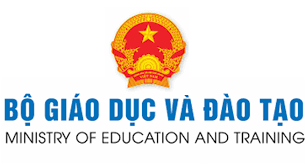Học trực tuyến
Week 01 Teaching date: ……/9/2021
Period 02
STAGE 1: DESIRED OBJECTIVES
A. OBJECTIVES
1. Cognition: By the end of the lesson, students will be able to
- recognize the topic of the unit, the topic of the lesson and the situation for a conversation about some leisure activities
- List some leisure activities
2. Skills:
- Identify the specific information through listening and reading the conversation between Mai, Phuc, and Nick
- Talk about what students like to do in their free time
3. Attribute: Ss must have good attitude towards the co-operation, and their life
4. Competence: Develop their communication and collaboration skills by making their favourite leisure activities
B. LANGUAGE FOCUS
1. Vocabulary:
- Some leisure activities: Making crafts, doing DIY, pet training, texting,…
- Some adjectives to describe the feeling: good, satisfied, relaxing, exciting,…
2. Grammar: Verbs of liking + gerund/ to-infinitive.
C. INSTRUCTIONAL RESOURCES:
1. Teacher: Textbooks, a situation picture ( the picture on page 7), teaching plan, audio track 2 (English 8-Unit 1-page 6)
2. Students: Books and notebooks.
STAGE 2: ASSESSMENT EVIDENCE
STAGE 3: LEARNING PLAN
* Consolidation: (2’)
- Asks ss to recall the main knowledge they have learnt in this period.
- Consolidates and asks Ss to remember
+ Vocabulary related to leisure activities.
+ Interacting about one’s leisure activities (names & describing them)
* Homework: Teacher asks Ss to:
- Learn by heart all the new words
- Prepare: Unit 1 - A Closer Look 1
The end!
Unit 1: My leisure activities
- Xem: 1363
- Thảo luận: 0
UNIT 1: LEISURE ACTIVITIES
Lesson 1: Getting Started–It’s right up my street.
Week 01 Teaching date: ……/9/2021
Period 02
STAGE 1: DESIRED OBJECTIVES
A. OBJECTIVES
1. Cognition: By the end of the lesson, students will be able to
- recognize the topic of the unit, the topic of the lesson and the situation for a conversation about some leisure activities
- List some leisure activities
2. Skills:
- Identify the specific information through listening and reading the conversation between Mai, Phuc, and Nick
- Talk about what students like to do in their free time
3. Attribute: Ss must have good attitude towards the co-operation, and their life
4. Competence: Develop their communication and collaboration skills by making their favourite leisure activities
B. LANGUAGE FOCUS
1. Vocabulary:
- Some leisure activities: Making crafts, doing DIY, pet training, texting,…
- Some adjectives to describe the feeling: good, satisfied, relaxing, exciting,…
2. Grammar: Verbs of liking + gerund/ to-infinitive.
C. INSTRUCTIONAL RESOURCES:
1. Teacher: Textbooks, a situation picture ( the picture on page 7), teaching plan, audio track 2 (English 8-Unit 1-page 6)
2. Students: Books and notebooks.
STAGE 2: ASSESSMENT EVIDENCE
| Performance Tasks | Performance products | Assessment tools |
| - Practicing all new words. - Practicing the conversation. |
- Students’ interaction. - Students’ answers |
- Observation on and sts’ questions and answers - Questions – answers - Peer- Corrections |
STAGE 3: LEARNING PLAN
| Teacher’s and students’ activities | The main contents |
| 1. Warm up (4’) a, Aim: To attract Ss’s attention to the lesson and to lead in the new lesson. b, Contents: Ss work individual to watch a song about free time activities and then guess the topic of the lesson by writing different leisure activities appear in this song c, Outcome: Ss can write as many leisure activities as they know in the video d, Organization: |
|
| - T asks students to watch and listen to a song about free time activities. Then T sets a limited time (about 1 mins) for students list some activities in this song. - T checks Ss’ answers and give constructive feedback - T leads ss to the new lesson. |
Brainstorming  |
| 2. Presentation (16’) a, Aim: Help Ss study some vocabularies related to the topic. Then Ss can listen and read for information about the topic “leisure activities”. b, Contents: + Ss work individually to study new words, and practice them c, Outcome: Ss can study some vocabularies about leisure activities and listen and read the conversation well. d, Organization: |
|
| - Teacher uses different techniques to teach vocabulary (situation, realia, pictures .....) - Students can choose which words they want to learn by touching the words - Students can touch each word to listen the way to pronounce it => Checking: Matching the words and their meanings - T asks Ss some questions related to the lesson. Ss answer the questions individually. ? What can you see in the picture? Where is the place? ? Why do you think Mai, Phuc and Nick are there? ? What are they holding in their hands? ? What are they talking about? ? Can you guess what Mai, Phuc and Nick like doing in their free time? - T sets the scene: We are going to listen and read a dialogue about Nick's, Phuc's and Mai's leisure activities. - T plays the recording for students to listen - Students can play the audio again to listen and practice reading the conversation aloud |
I. Vocabulary + trick (n)/trɪk/ : trò lừa gạt, hoạt động khéo tay + craft kit (n) /krɑːft kɪt/: bộ đồ dùng làm thủ công + beads (n) /biːd/: hạt chuỗi + sticker (n) /ˈstɪkə(r)/: nhãn dính + wool (n) /wʊl/ : len + button (n) /ˈbʌtn/ : cúc áo + savings (n) /ˈseɪvɪŋ/: tiền tiết kiệm + melody (n) /ˈmelədi/: giai điệu II. Listen and Read |
| 3. Practice (18’) a, Aim: Help students understand more about the dialogue and know how to use some words and adjectives to describe some leisure activities. b, Contents: + Ss work individually to choose the correct answers. + Ss work individually to tick the boxes the leisure activities Mai, Nick and Phuc have. + Ss work individually to answer the questions. + Ss work individually to match the words or phrases in the box with the right pictures. + Ss work individually to choose the adjectives in the box to fill in the blanks. c, Outcome: Ss can write as many leisure activities as they can. d, Organization: |
|
- T asks Ss to work individually to choose the correct answer; compare their answer with a partner and then explain their choice. - T gives the correct answers on the screen. - T asks Ss to read the dialogue again to decide the right activities for each person - T gives constructive feedback and explains each sentences for Ss to understand clearly. - Draws Ss’ attention to the contexts when Mai said ‘Check out this book’ and Phuc said ‘It’s right up your street!’. Together with Ss elicits the meaning of these two expressions. + To check out something means to examine something or get more information about it in order to be certain that it is suitable (or true, or false). + If something is right up your street, it is the type of thing that you are interested in or that you enjoy doing. - T asks Ss to work in pairs to match the words/ phrases with the right pictures, then listen to check their answers. - T asks Ss to work individually to do the task then compare their answers with a partner. Tell Ss they need to look for the surrounding key words in order to complete the task. Note that ‘good’ and ‘satisfied’ fit both items 1 and 5. - T gives the correct answers and constructive feedback |
1a. Circle the correct answer 1. bookstore 2. book 3. dog 4. craft kit 5. folk music 6. Vietnamese 1b. Choose the right leisure activities for each person. - Phuc’s activities:1,3,6,7 - Mai’s activities: 2,7 - Nick’s activities: 3,4,5,6 1c. Answer the questions => Possible answer: (1) She wants Phuc to look over the book. (2) It means that’s really what Mai wants. 2. Find words or phrases in the box to describe the photos. Then listen to check the answers. Key: 1. playing computer games 2. playing beach games 3. doing DIY 4. texting 5. visiting museum 6. making crafts 3. Complete the sentences … 1. satisfied 2. relaxing/ exciting 3. fun 4. boring 5. good |
| 4. Application (5’) a, Aim: Ss can talk about leisure activities and share feelings about them. b, Contents: + Ss work individually to describe the leisure activity and give the reason why they like them. + Ss work in groups to talk about one activity. c, Outcome: Ss can talk about leisure activities fluently. d, Organization: |
|
| + Work individually - T asks Ss to describe the leisure activity and give the reason why they like them |
Game: Changing partner. Eg: I like reading book in my free time. Because reading book helps me improve my knowledge and know what happening in our country or over the world. … |
* Consolidation: (2’)
- Asks ss to recall the main knowledge they have learnt in this period.
- Consolidates and asks Ss to remember
+ Vocabulary related to leisure activities.
+ Interacting about one’s leisure activities (names & describing them)
* Homework: Teacher asks Ss to:
- Learn by heart all the new words
- Prepare: Unit 1 - A Closer Look 1
The end!
Thông tin bài học
Bài giảng điện từ về chủ để "Leisure activities" các hoạt động trong thời gian rảnh mà chúng ta có thể làm
- Thuộc chủ đề:
- Học liệu số
- Gửi lên:
- 06/09/2022
- Lớp:
- Lớp 8
- Môn học:
- Tiếng Anh
- Xem:
- 1.363
Tải về:
Từ drive.google.com:
Ý kiến bạn đọc
Bạn cần đăng nhập với tư cách là Thành viên chính thức để có thể bình luận
Bài giảng khác
- Lesson 6: Skills 2 (Listening and Writing)
- Unit 2: Life in the countryside
- A closer look
- Unit 5 - Festivals in Viet Nam - Lesson 2 - A closer look
- Period 68. Lesson 2: A closer look
- Lesson 2: A closer look
- Lesson 6: Skills
- Unit 9: Natural disasters
- Unit 9: natural disasters - lesson 2
- Unit 9: natural disasters - lesson 1
-
 Toàn bộ hình ảnh tại Lễ Tổng kết vào trao giải Cuộc thi
Toàn bộ hình ảnh tại Lễ Tổng kết vào trao giải Cuộc thi
- Thông báo về Lễ Tổng kết và trao giải thưởng Cuộc thi
-
 Thông báo về việc kiểm tra và cập nhật địa chỉ email (nếu muốn thay đổi) để nhận Giấy chứng nhận của Ban Tổ chức Cuộc thi
Thông báo về việc kiểm tra và cập nhật địa chỉ email (nếu muốn thay đổi) để nhận Giấy chứng nhận của Ban Tổ chức Cuộc thi
- Danh sách các bài đạt giải Cuộc thi Thiết kế bài giảng điện tử 2021
- Thông báo về kết quả Cuộc thi Thiết kế bài giảng điện tử
- Thông báo số 5: Về việc lùi thời gian công bố kết quả cuộc thi









